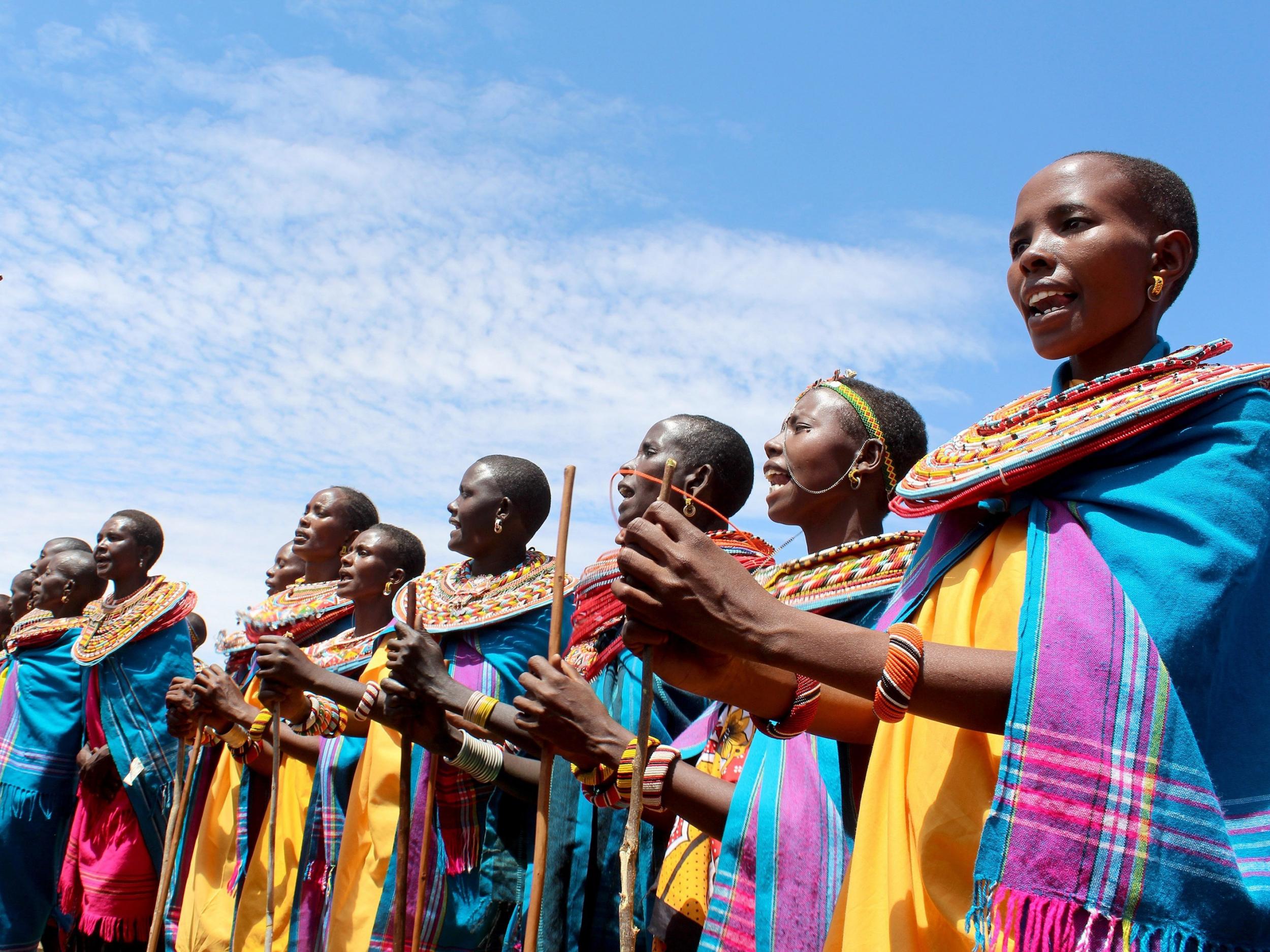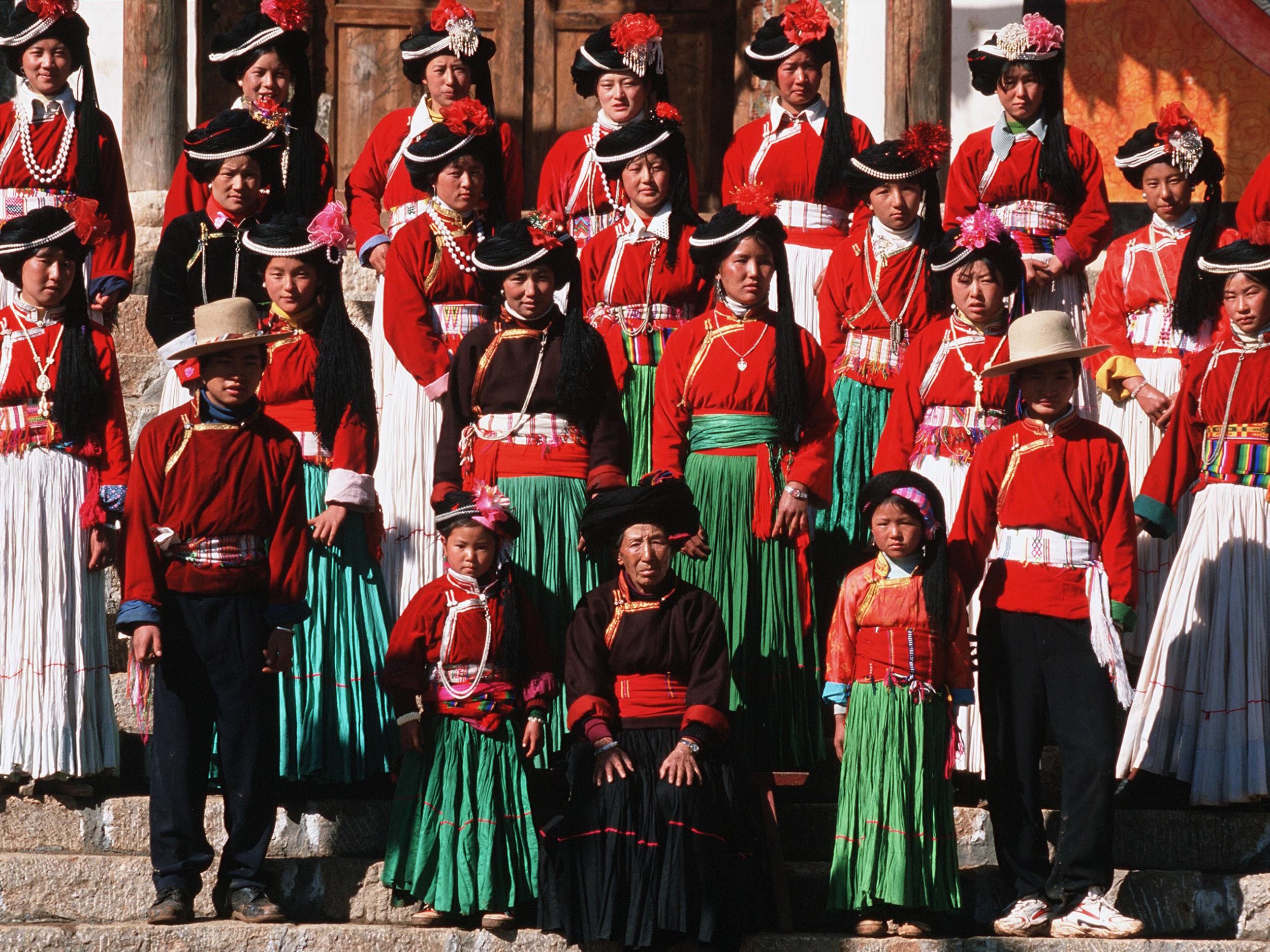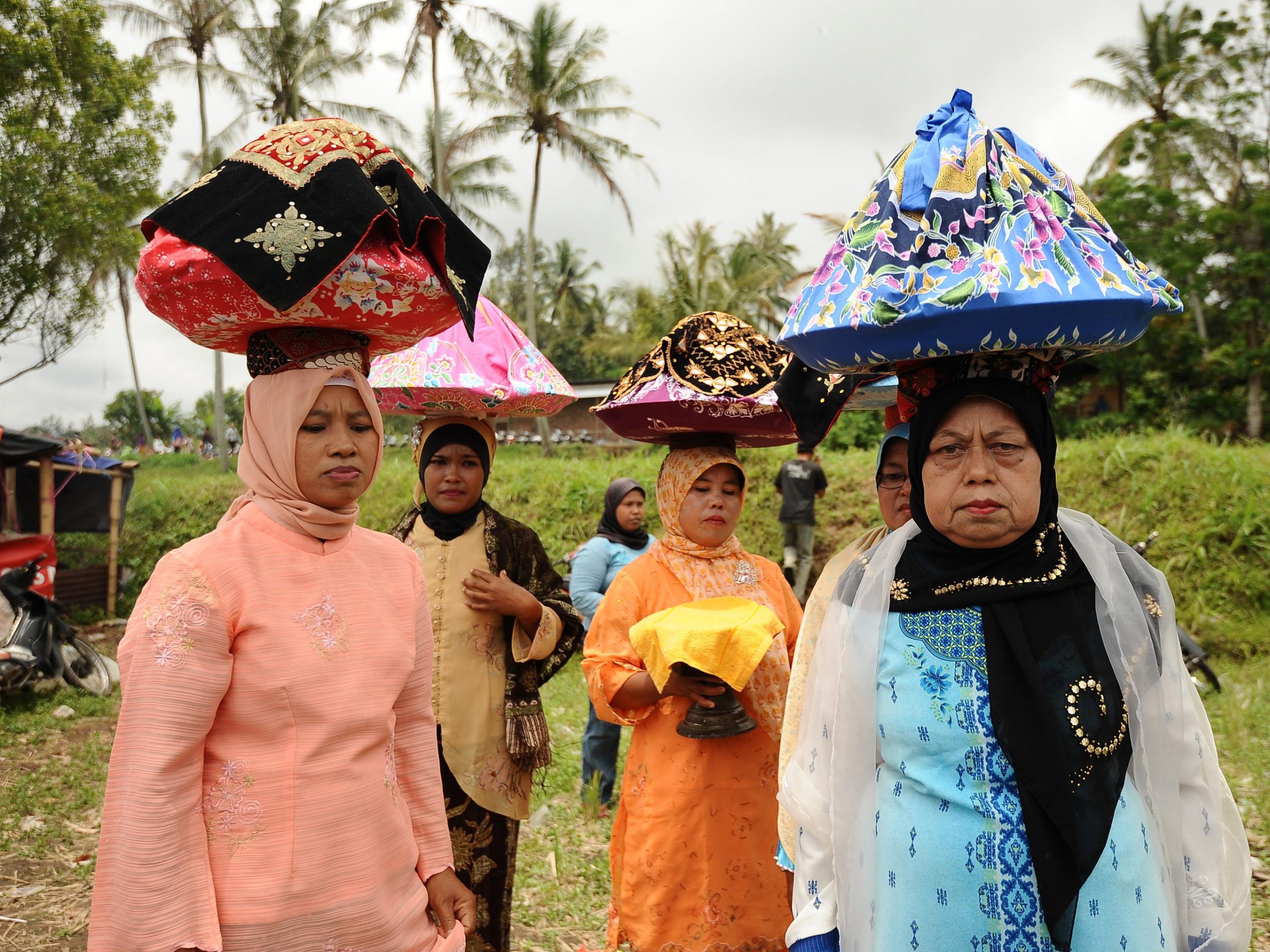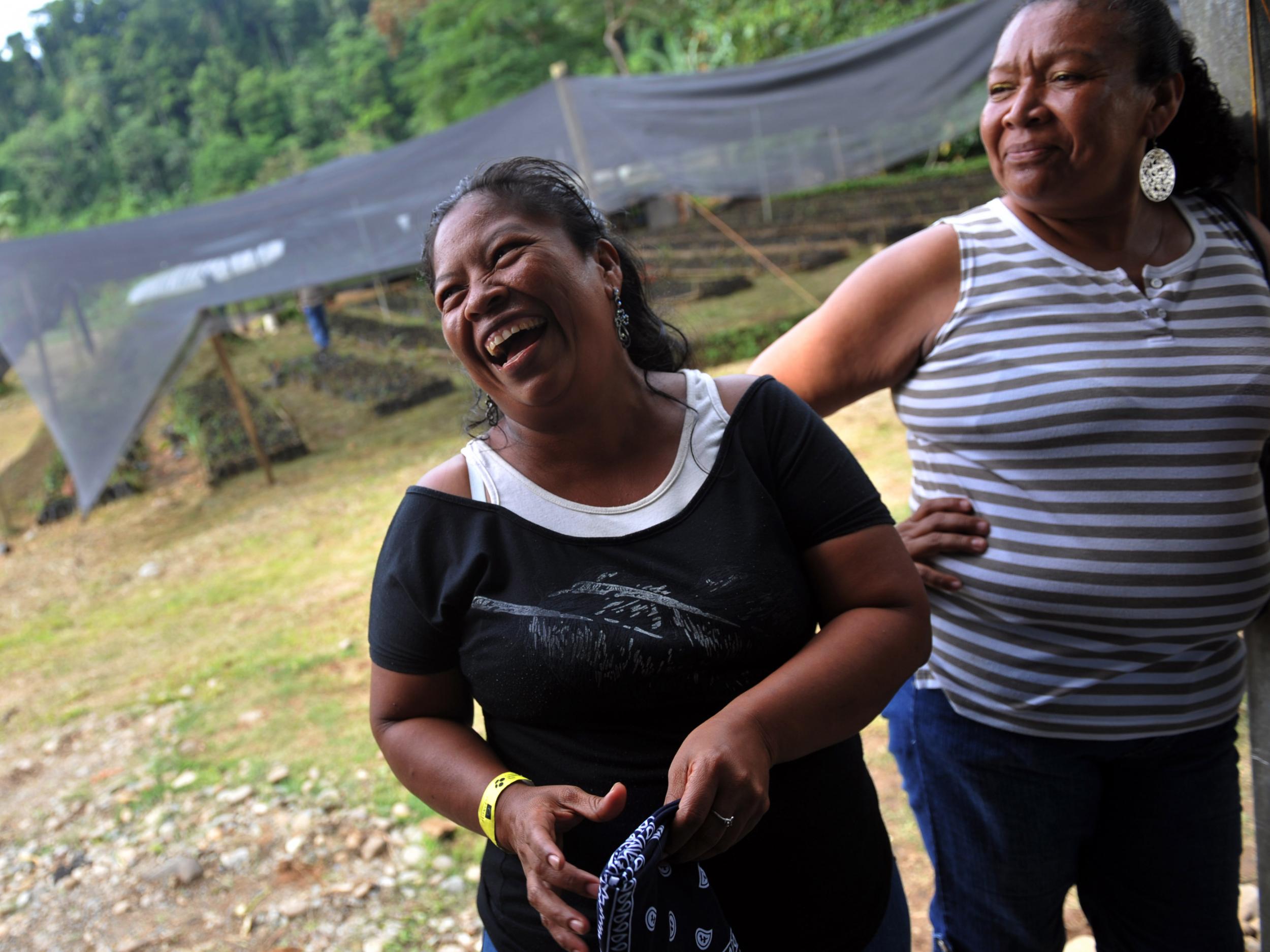International Women's Day: What are matriarchies, and where are they now?
The idea of women’s rule may seem alien, but in fact, history is full of examples of matriarchal societies – and some still exist today. We take a look at five for International Women’s Day

Your support helps us to tell the story
From reproductive rights to climate change to Big Tech, The Independent is on the ground when the story is developing. Whether it's investigating the financials of Elon Musk's pro-Trump PAC or producing our latest documentary, 'The A Word', which shines a light on the American women fighting for reproductive rights, we know how important it is to parse out the facts from the messaging.
At such a critical moment in US history, we need reporters on the ground. Your donation allows us to keep sending journalists to speak to both sides of the story.
The Independent is trusted by Americans across the entire political spectrum. And unlike many other quality news outlets, we choose not to lock Americans out of our reporting and analysis with paywalls. We believe quality journalism should be available to everyone, paid for by those who can afford it.
Your support makes all the difference.There is a school of thought that believes human society was originally matriarchal.
From around 1.5 million years ago, women were revered as priestesses and honoured for their ability to bear children. Archaeological evidence, such as ancient Venus statues, seems to support this.
But somewhere around 3,000BC, the balance shifted, and – so scholars believe – society was thereafter dominated by men; the patriarchy was born.
Although this school of thought, known as the “myth of matriarchal prehistory”, has been knocking around since the Classical Greek era, it really took off in the feminist waves of the late-20th century.
Scholars and academics scoured the history books for tales of the queen-priestess of Minoan Crete, the legends of the Amazonian women, the Germanic tribe of the Sitonians, the Cham of central Vietnam… anywhere and everywhere for evidence of matriarchies, and, crucially, whether they were something to emulate.
But these days, the word matriarchy carries some misinterpretations. And it’s important to clarify that in feminist thought, the ideal of the harmonious, nature-worshipping matriarchy is not the mirror image of patriarchy.
According to Heide Goettner-Abendroth, matriarchy expert and founder of The International Academy Hagia for Modern Matriarchal Studies: “In matriarchies, mothers are at the centre of culture without ruling over other members of society.”
The aim, she explains to Dame magazine, “is not to have power over others and over nature, but to follow maternal values, ie to nurture the natural, social and cultural life based on mutual respect”.
So, patriarchy: power over others. Matriarchy: power from within.
Nor are we talking Wonder Women and her hidden island of Amazonian warriors. That is to say, matriarchy isn’t really about women ruling over men.
Catherine Edsell is an expedition leader and founder of Matriarch Adventures, which takes women out into the desert to observe elephants: the “ultimate matriarchy”.
Edsell explains that she has always been drawn to the idea of matriarchal societies, “the idea of women living a more egalitarian lifestyle, with strong community bonds and a healthy bartering system that is supportive rather than exclusive; wise rather than merely strong”.
She stresses: “I don’t see it as a society that oppresses men; more a society that values instinct as much as intellect, receptivity as much as assertiveness, collaboration as much as individualism and empathy as much as objectivity.”
Elephants, she explains, are “the iconic matriarchs”: “In the elephant world, successful matriarchs are not self-appointed leaders of their family; they are leaders because their family respects them, and they are respected because they are proven over the years that they can be trusted to make wise decisions.”
“Through the years, older females become ‘repositories’ of social and ecological knowledge. So, natural leadership qualities and long experience combined are the makings of a wise matriarch.”
Edsell believes that this is “a good example of how wisdom, charisma and experience are deemed honourable qualities – perhaps we should look for that in our leaders, male or female”.
These days, Merriam-Webster defines matriarchy both as a group or state governed by women, and as system of social organisation in which inheritance is traced through the female line.
These are more commonly known as matrilineal societies, where studies record significantly less crime, violence and divorce than in traditionally patriarchal societies – and significantly more sex.
Just look at our two closest genetic relations: the bonobo and the chimpanzee. As Karen Joy Fowler so neatly summarises in her award-winning novel, We Are All Completely Beside Ourselves, the bonobo and the chimpanzee are the perfect allegory for matriarchy vs patriarchy.
Chimpanzees are a textbook example of a male-dominated animal society. The lowest-status male ranks higher than the highest-status female. Extreme violence and infanticide are common, while female chimps have no say in their sexual partners.
The seriously endangered bonobo, on the other hand, found only in the Democratic Republic of Congo, is almost identical genetically – but could not be more different socially. Sisterly solidarity prevails, with the females running the peaceful, egalitarian show. The primates are also famed for their use of sex to solve every problem, in any situation and, crucially, with any gender.
The two primates, so genetically similar and yet so drastically different, perhaps provide an insight into the direction human social evolution could have taken.
But does Edsell think the concept of matriarchy has a future in society? “To live communally as many women around the world do, even if they are not ‘matriarchal societies’ as such, is a very nurturing and supportive way to live.”
And even to this day, matriarchal societies exist all over the globe. Below are five very different examples of female-led and matrilineal cultures from around the world.
Mosuo, China

In the foothills of the Himalayan mountains, by the Lugu Lake in south-west China, there exists “the land where women rule”, or the “kingdom of women”: the Mosuo.
Officially, the Chinese government classifies them as an ethnic minority known as the Nakhi, but in reality the Mosuo are culturally unique.
For the 40,000 or so of the group who call themselves the Na, China’s one-child policy held no sway. Indeed, they have been practising matriarchy for thousands of years.
Each large household is ruled by an ah mi, the matriarch, and property and lineage are passed down through the female line.
Typically, women take care of business, and men take care of the animals. Children belong to their mothers; indeed, babies often do not know who their father is – for which there is no stigma.
This is partly down to what is known as “walking marriage” – Mosuo men stay with their mothers, and at night women choose a partner by walking to his home. Couples traditionally did not live together; in fact, the language has no word for “husband” or “father”.
The women take lovers from various tribes, enjoying relatively unique sexual agency and freedom from judgement – with one exception.
Many visitors misunderstand these cultural practices and assume that Mosuo women offer free sex. Tourism has flourished in the area, and the Lugu Lake now boasts a red-light district.
Minangkabau, Indonesia

The highlands of West Sumatra are home to the largest known matrilineal society: the Minangkabau. In fact, the population is around 4.2 million.
According to legend, King Maharajo Dirajo, who established the Koto Batu kingdom, died in the 1300s leaving three baby sons by three wives. His first wife, Puti Indo Jalito, is said to have taken charge of the kingdom, setting the stage for a female-led society.
Both land and family name pass from mother to daughter, while men take on religious and political roles – although some women do also enter into these spheres.
However, while the men may take on the leader’s role, it is in fact the women who choose the chief, and can remove him if necessary.
But the matriarchal Minangkabau culture has in part been shaped by its diaspora; men typically travel out of the country for long periods of time to work, leaving the women behind to care for the land and property.
Minangs argue that: “Men can live anywhere, and so do not need a house like women do.”
Alapine Village, Alabama
Lesbian paradise, hippy commune, no-man’s land... there are many epithets for the hundred or so remaining female-only colonies in America, but the official name (and spelling) is Womyn’s Lands.
These communities mainly trace their routes to the original “Pagoda by the Sea”, founded in St Augustine, Florida, in 1977.
A product of the 1970s gay rights and women’s liberation movements, a group of women made their way to Florida to live together on a beach where no men were allowed. For 15 years, the Pagoda had hundreds of female visitors, but only a small core community of 12 cottages.
In the 1990s, some of these women, including Emily Greene, relocated to a mountaintop in rural Alabama. They formed a camp called Alapine Village which still exists today.
According to their website, the village “is home to a diverse group of womyn who celebrate many spiritual paths, pursue a variety of outdoor activities, enjoy vegetarian and gluten-free to omnivorous diets”.
These days, around 17 middle-aged women live and work the land together in an ecofriendly, community-based and strictly man-free lesbian community.
Bribri, Costa Rica
The Bribri are an indigenous people found in the Limon province of Costa Rica and northern Panama.
Census data estimates that there could be anywhere between 12,000 and 35,000 members of the tribe, but the effect of colonials and Western tourism has left many disenfranchised and unemployed.

Their society operates on a matrilineal line; women pass on land to their children, and tradition and tribal lineage to their grandchildren. Each Bribri belongs to a “clan”, which is determined by their mother.
Only women are permitted to prepare the traditional cacao drink, used in sacred rituals, which gives them a certain spiritual superiority. Bribri legend has it that the cacao tree used to be a woman, who was turned into a tree by the gods.
Noemy Blanco Salazar, a Bribri matriarch of Amubri, Costa Rica, told Courtney Parker that women “are heirs of life”.
“We have to assume this mission that Sibu (Bribri god) proudly entrusted, with dignity. We must strive to build valuable ways of being for society. Mother Earth energy is the force that grows in our spirit.”
Umoja, Kenya
Umoja is an unusual example of a matriarchy where men are actually banned. A literal no-man’s land, the village in the grasslands of Samburu, northern Kenya, is home to survivors of sexual assault and gender-based violence. It is surrounded by a thorn fence to keep out all male visitors.
The matriarch of Umoja, Rebecca Lolosoli, founded the village in 1990 with 15 survivors of rape at the hands of British soldiers. Lolosoli herself was recovering from an attack by a group of men, as a punishment for spreading women’s rights in her village.
Umoja, which means “unity” in Swahili, has since provided refuge for women of the Samburu. They come from isolated and deeply patriarchal villages along the Rift valley, fleeing forced marriages, FGM, domestic violence and sexual assault.
They learn trades, sell crafts, teach children and show tourists around a cultural centre. They also work in the neighbouring villages to educate women on their rights.
As of 2015, there were 47 women and 200 children living in Umoja.
Subscribe to Independent Premium to bookmark this article
Want to bookmark your favourite articles and stories to read or reference later? Start your Independent Premium subscription today.
Join our commenting forum
Join thought-provoking conversations, follow other Independent readers and see their replies
Comments